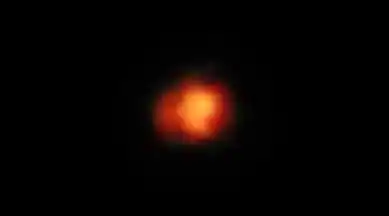In a monumental breakthrough, the James Webb Space Telescope (JWST) has substantiated the status of ‘Maisie’s Galaxy’ as the earliest known galaxy in the universe. This unprecedented discovery, unveiled last year, sheds new light on the origins of our cosmos and offers a glimpse into the distant past of our universe. The confirmation of this extraordinary find marks a significant milestone in the realm of astrophysics, opening up new avenues for unraveling the mysteries of the universe’s birth.

Unveiling the Cosmic Time Capsule
In December of last year, the JWST’s observations of ‘Maisie’s Galaxy’ captured the attention of the global scientific community. Situated an astonishing 13.4 billion light-years away, this cosmic entity serves as a virtual time capsule, offering a window into the universe’s infancy, a mere 250 million years after the Big Bang. The data obtained from the telescope’s cutting-edge instruments presented a compelling case for the galaxy’s early origin, but the confirmation has taken time due to the meticulous analysis required to eliminate any doubts.
Validation through Robust Analysis
The JWST’s confirmation of ‘Maisie’s Galaxy’ as the earliest ever discovered has been achieved through a rigorous process of data analysis and cross-verification. A team of astrophysicists and cosmologists collaborated tirelessly to eliminate any potential sources of error or bias. By meticulously examining the galaxy’s spectral emissions and assessing its redshift, a measure of how much the universe has expanded since its light was emitted, scientists have reaffirmed the remarkable age of ‘Maisie’s Galaxy.’
Understanding the Implications
The significance of this confirmation extends far beyond the confines of astronomy. ‘Maisie’s Galaxy’ offers a unique glimpse into the cosmic “Dark Ages,” a time when the universe was shrouded in obscurity and devoid of any discernible sources of light. The discovery of this early galaxy provides a crucial piece of the puzzle in our quest to understand the processes that ignited the universe’s transition from darkness to light. It allows scientists to refine their models of cosmic evolution and gain insights into the formation of the first stars and galaxies.
Unlocking Further Discoveries
The verification of ‘Maisie’s Galaxy’ as the earliest known galaxy serves as a springboard for future research and exploration. The JWST’s state-of-the-art capabilities empower astronomers to peer deeper into the cosmos than ever before, promising more revelations about the universe’s infancy. As the telescope continues to scan the skies, it holds the potential to uncover additional galaxies from the early universe, potentially rewriting our understanding of cosmic history.
Implications for Astrobiology
The newfound knowledge about ‘Maisie’s Galaxy’ has implications that extend beyond astrophysics. The conditions of the early universe that this galaxy offers a glimpse of could shed light on the conditions necessary for the emergence of life. By studying the chemical composition and environmental factors present in galaxies of this age, scientists can gain insights into the potential habitability of other worlds and the likelihood of life arising elsewhere in the universe.
The confirmation of ‘Maisie’s Galaxy’ as the earliest ever discovered by the James Webb Space Telescope marks a pivotal moment in the annals of astrophysics. This remarkable achievement not only solidifies our understanding of the universe’s birth but also paves the way for further exploration and discovery. As we continue to unravel the mysteries of ‘Maisie’s Galaxy’ and its contemporaries, we inch closer to comprehending the profound story of our universe’s origin and evolution. This monumental breakthrough reminds us of the boundless potential of human ingenuity and curiosity, propelling us toward a future filled with unparalleled cosmic insights.













